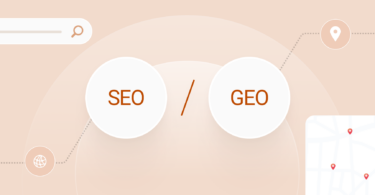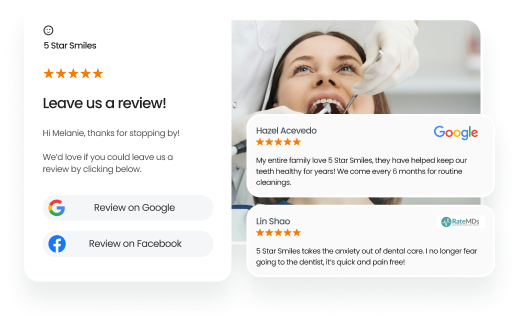Conversational marketing isn’t just a trend; it’s how modern customers expect to interact with brands. Today’s customers don’t want to be sold to; they want to be engaged in real-time, meaningful conversations.
Whether they’re researching choices, seeking assistance, or ready to make a purchase, people now expect quick, personalized, and two-way communication that feels human, not scripted.
That’s why more businesses are embracing conversational marketing that replaces the old-school one-size-fits-all approach. This helps brands build trust, gather feedback, and guide customer decisions more naturally and effectively.
In this blog, we will explore conversational marketing strategy, why it matters, its benefits, evolution, real examples, case studies, and much more. Let the conversation begin.
Table of contents
- What is conversational marketing?
- Why conversational marketing matters more than ever
- The benefits of conversational marketing
- The evolution of conversational marketing: From handshakes to instant chats
- Email and social media reimagined: From one-way updates to real conversations
- Personalization at scale: Turning data into meaningful dialogue
- How Birdeye helped D4C Dental create meaningful conversations
- Examples of conversational marketing
- Steps to build a conversational marketing strategy that works
- Why Birdeye Chatbot AI sets a new standard
- Birdeye leads the way in conversational marketing and support
- FAQs on Conversational marketing
- Where is conversational marketing heading?
What is conversational marketing?
Conversational marketing is a strategy built around two-way, real-time conversations that guide potential customers through their buying journey.
Instead of relying on traditional campaigns that speak to the masses, this approach creates one-to-one interactions across messaging apps, websites, SMS messages, and social platforms to build trust, answer questions, and ultimately drive conversions.
It’s not just about being available; it’s about being responsive and personal. Whether a chatbot greets a website visitor or one customer support agent replies over Facebook Messenger, every exchange is an opportunity to understand customer needs and move them closer to a decision.
This strategy uses a range of conversational marketing tools, such as live chat, GenAI chatbots, SMS messaging, and even voice assistants, to deliver personalized responses at scale. What makes it powerful is its ability to:
- Listen first
- React in real-time
- Tailor each conversation
The user’s behavior and preferences drive all actions mentioned above.
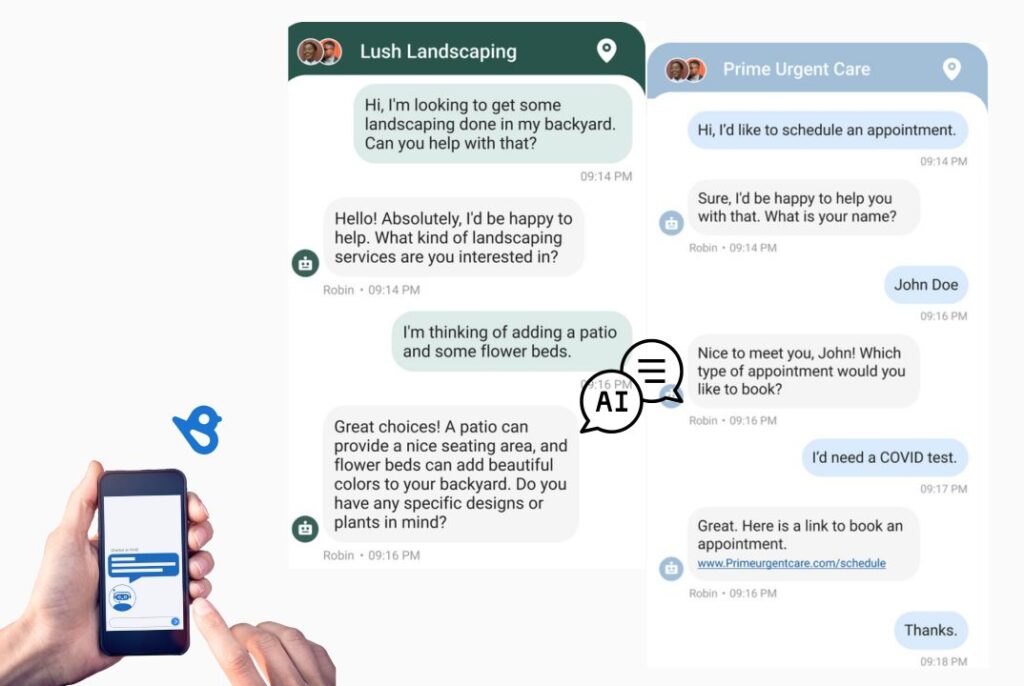
Instead of treating marketing as a monologue, conversational marketing turns it into a dialogue, one that builds genuine relationships and helps businesses interact, earn trust, drive qualified leads, and convert faster.
Why conversational marketing matters more than ever
The way customers interact with businesses has fundamentally changed. People no longer wait days for email replies or navigate clunky forms to get answers.
Whether they’re exploring services, asking for advice, or comparing options, the expectation is clear: communication should be quick, helpful, and frictionless.
Conversational digital marketing meets these expectations head-on. In a world where customer attention spans are shrinking and competition is just a click away, being responsive is a competitive advantage.
According to Forrester, 53% of customers are likely to abandon their online purchase if they can’t find a quick answer to their question. Every unanswered query is a potential lost sale, and every timely response is a chance to convert. But speed alone isn’t enough; credibility also plays a key role.
According to Birdeye’s The One Study, consumers read an average of 4.9 reviews before visiting a service provider. These reviews, when highlighted in chatbot windows or shared in automated follow-ups, help build trust and move customers closer to action.
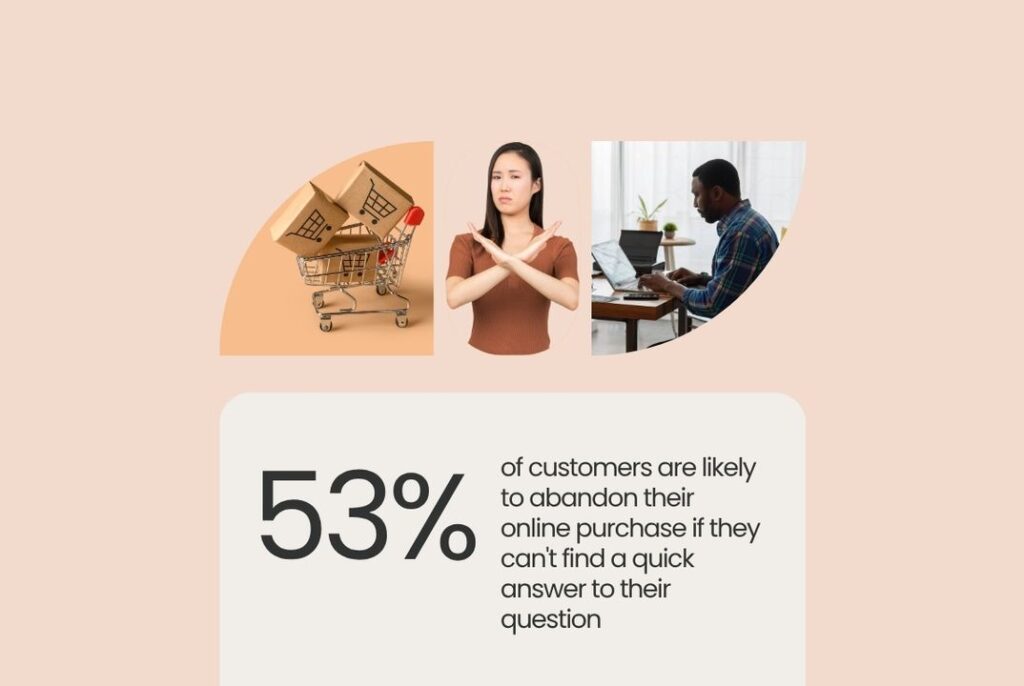
In addition, the sheer scale of modern messaging behavior underscores the shift. With billions of messages exchanged daily on platforms like Facebook Messenger, Instagram, and WhatsApp, these channels are no longer just convenient touchpoints; they’re foundational to how people communicate.
In short, conversational marketing is shaping customer behavior. Businesses that embrace this approach gain more than leads; they build trust, reduce drop-offs, and create experiences that keep customers coming back.
The benefits of conversational marketing
Here’s how a strong conversational marketing strategy delivers measurable results across marketing and sales functions.
Improved lead generation with higher intent
By meeting website visitors with real-time responses through chat, messaging apps, or SMS, businesses can convert interest into action instantly. These one-to-one conversations allow brands to qualify leads, with no forms or delays, resulting in faster and more accurate lead capture.
Stronger customer engagement through meaningful dialogue
Today’s customers want more than automated touchpoints. Conversational marketing enables genuine engagement by creating space for two-way communication across multiple channels, from email marketing to social media and live chat.
Whether resolving concerns or recommending solutions, every interaction adds value and deepens the connection, essential for building lasting relationships.
Shorter sales cycles through instant communication
Delays are deal-breakers. When questions go unanswered, customers move on. Real-time interactions remove these barriers, enabling faster decisions and smoother conversions. By offering instant support, businesses not only increase conversion rates but also significantly shorten the sales cycle.
This advantage is especially powerful for sales teams, who can prioritize qualified leads based on live conversations, improving productivity and performance.
Real-time insights without the need for surveys
Every conversation is a window into customer behavior. Businesses that actively monitor chat interactions can gather insights on common pain points, objections, and preferences, providing free market research without disrupting the experience.
These insights can inform marketing strategies, product development, and customer support improvements.
Higher loyalty through consistent responsiveness
Responsiveness builds trust. Customers who know they can reach your brand and receive immediate, personalized answers are more likely to remain loyal.
Over time, this level of attentiveness strengthens the customer relationship management framework, turning casual buyers into brand advocates.
Whether in their personal or professional lives, people remember brands that make interactions easy and empathetic.
To understand the full impact of conversational marketing, let’s explore its evolution from personal interactions to real-time, scalable conversations.
The evolution of conversational marketing: From handshakes to instant chats
The journey to conversational marketing didn’t begin with AI; it began with people. Before automation, social media, and chatbot scripts, marketing was inherently human. Sales were made through conversations that happened in living rooms, across office desks, or over the phone. This one-to-one, trust-driven interactions took time but helped in building relationships.
The foundation
In the earliest days of selling, the sales platform’s representatives were the brand. They listened, responded, and adapted, tailoring each conversation to the customer in front of them. While this approach didn’t scale easily, it was effective because it addressed needs in real-time, something modern customers still crave.
The shift
As businesses grew, so did the need to reach larger audiences. Enter ATL (Above-the-Line), BTL (Below-the-Line), and TTL (Through-the-Line) marketing. These mass approaches include:
- TV ads
- Radio spots
- Billboards
- Email blasts
- Promotional mailers
They did offer unmatched scale but sacrificed personalization. Brands could now reach millions, but engagement became passive.
Traditional marketing often felt like a monologue: brands talked, audiences listened (or didn’t). The dynamic became more about attention capture than connection.
Bonus: Use AI chatbots that reflect your brand’s voice and tailor responses to user behavior. Birdeye Chatbot AI offers the perfect solution for this.
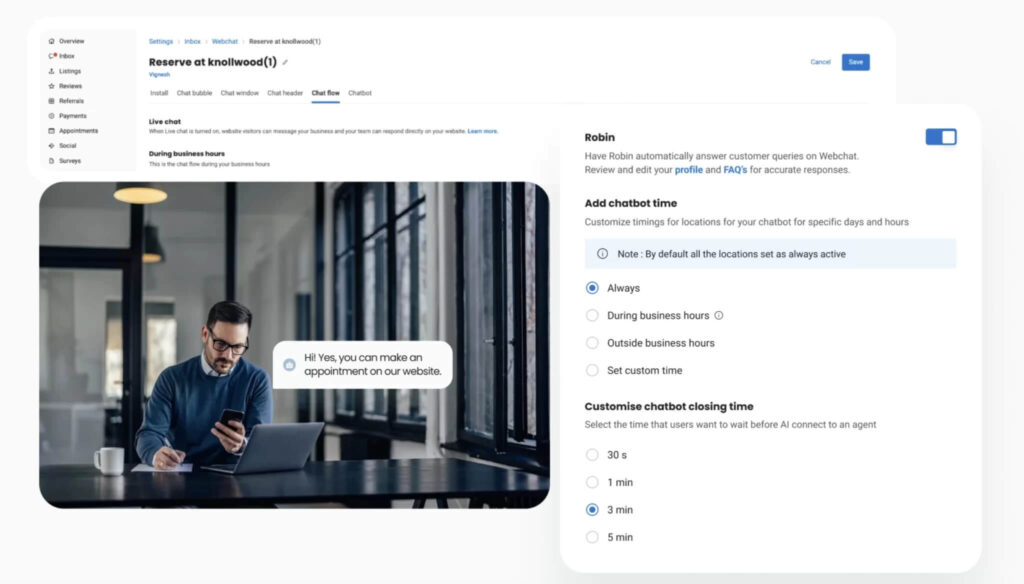
Let’s learn more about how AI chatbots provide the ideal solution to make conversational marketing effortless and effective.
The comeback
Today’s digital-first customer preferences have brought the pendulum swinging back, but with a modern twist. They expect the personalization of field sales with the speed and availability of digital tools. That’s where conversational marketing shines with genuine connections.
Instead of relying solely on campaigns, businesses now engage in real-time, two-way conversations with thousands of users simultaneously. Whether it’s a chatbot on a landing page, a live agent over WhatsApp, or an AI assistant responding on Instagram, the scale of ATL meets the intimacy of one-on-one dialogue.
Pro Tip: Equip your chatbot with data from your highest-performing SEO pages. Solutions like Birdeye Chatbot AI can instantly deliver relevant, personalized responses that mirror the high-touch experience of traditional selling.
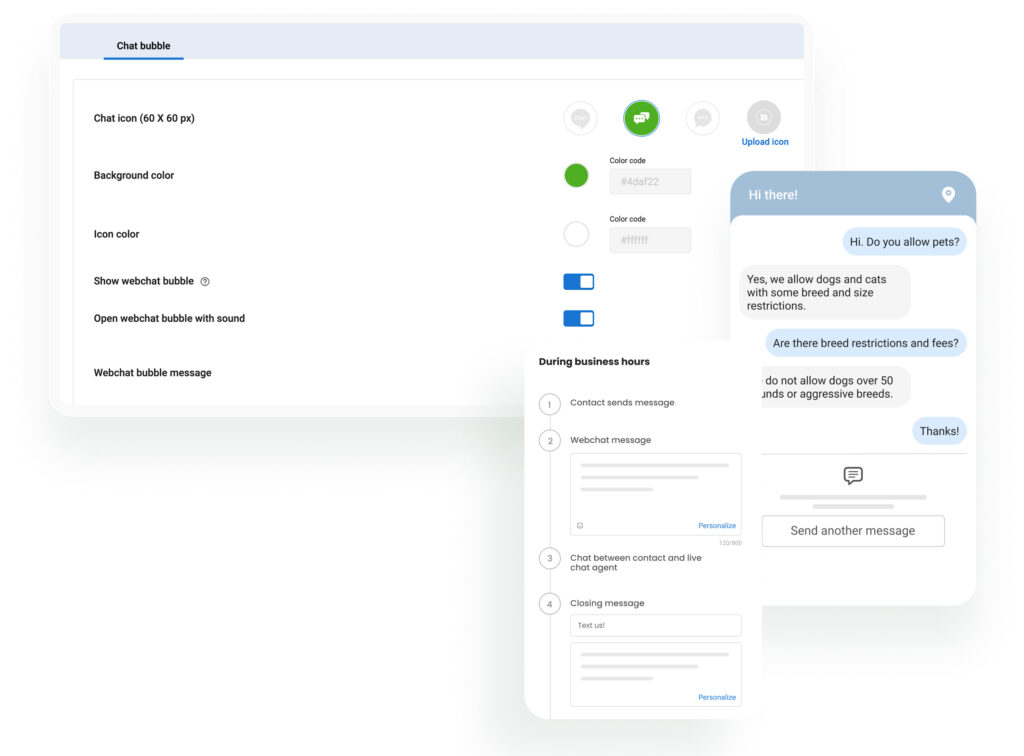
Email and social media reimagined: From one-way updates to real conversations
Email marketing has undergone a significant evolution. What once functioned primarily as a broadcast tool for sending product updates, newsletters, and promotions to a broad audience is now a dynamic platform for personalized, two-way communication.
In the age of conversational marketing, email exceeds the basic information delivery act; now, it’s about initiating interaction. Today’s emails are designed to spark engagement through clickable responses, integrated chat options, embedded surveys, and even AI-powered follow-ups.
Bonus: Add a simple, engaging question at the end of your email, like “Is this what you were looking for?” and include a reply CTA. Even a single prompt can increase response rates and open the door to a real-time chat.
Tone also plays a vital role.
Even the most seemingly minor interaction, like how you close an email or a message, contributes to the tone of your brand. A sign-off like “Let’s chat soon!” carries a different energy than “Best regards.” That tone consistency across platforms can reinforce your brand voice and build stronger customer relationships over time.
Social media as the frontline of customer connection
Social platforms are no longer just brand megaphones; they’ve become the most accessible and immediate space for individual customer interaction. Today’s social media conversation’s engagement unfolds in real-time, whether through direct messages, replies to comments, or reactions to tagged posts.
For businesses, this creates an enormous opportunity to build trust and loyalty by being responsive, present, and human. Brands like Wendy’s have built a following with sharp-witted responses, while companies like Sephora use social messaging to offer personalized consultations and product guidance that mimic in-store experiences.
Pro Tip: Treat every customer's DM like a support ticket and every comment as a chance to connect. Even a short reply can turn a passive follower into an engaged customer.
Now, let’s understand that better in the next section; it’s all about getting personalized.
Personalization at scale: Turning data into meaningful dialogue
One of the most potent drivers behind conversational marketing is its ability to make large-scale communication feel intimate and individual.
While traditional marketing often treats customers as segments or demographics, conversational strategies allow businesses to speak to the particular customer in context, in real-time, and in their preferred tone and channel.
Every customer wants to feel understood. When businesses use behavioral data, such as browsing history, location, past purchases, or even preferred communication styles, they can tailor meaningful conversations to resonate more deeply.
Whether it’s recommending a product based on previous interests or greeting a returning visitor by name, these small gestures create a sense of recognition that can significantly boost engagement.
Use conversational tools that integrate with your CRM to access a customer’s history and personalize outreach based on their journey. A well-timed, relevant message can outperform even your best-performing campaign.
The result? Higher engagement, more qualified leads, and better conversion rates. Personalization is no longer just a nice-to-have. It’s the foundation of a strategy that:
- Listens first.
- Responds quickly.
- Adapts instantly.
Turn conversations into conversions.
Want to see the impact of Birdeye on your business? Watch the Free Demo Now.
Chatbots and conversational marketing
Unlike traditional marketing channels, conversational tools offer something incredibly valuable: real-time feedback loops. From a simple thumbs-up on a chatbot response to a follow-up question from a live agent, every interaction provides clues about what’s working and what’s not.
These touchpoints improve the current experience and sharpen future interactions. Based on feedback trends, businesses can refine responses, improve workflows, and even adjust broader messaging strategies.
Train your chatbot to ask simple follow-up questions like:
“Did this solve your problem?” or “Would you like to speak with a team member?”
These micro-interactions create data that can inform smarter decisions over time. As stated by Jason Christley, Marketing Director, Argus Professional Storage Management:
“Just as AI is transforming Google search, it’s revolutionizing how chatbots operate on websites. With Birdeye Chatbot AI, businesses can go beyond simply answering questions, anticipating customer needs based on insights from past interactions enhances the overall experience and ensures a seamless, personalized journey for every visitor.”
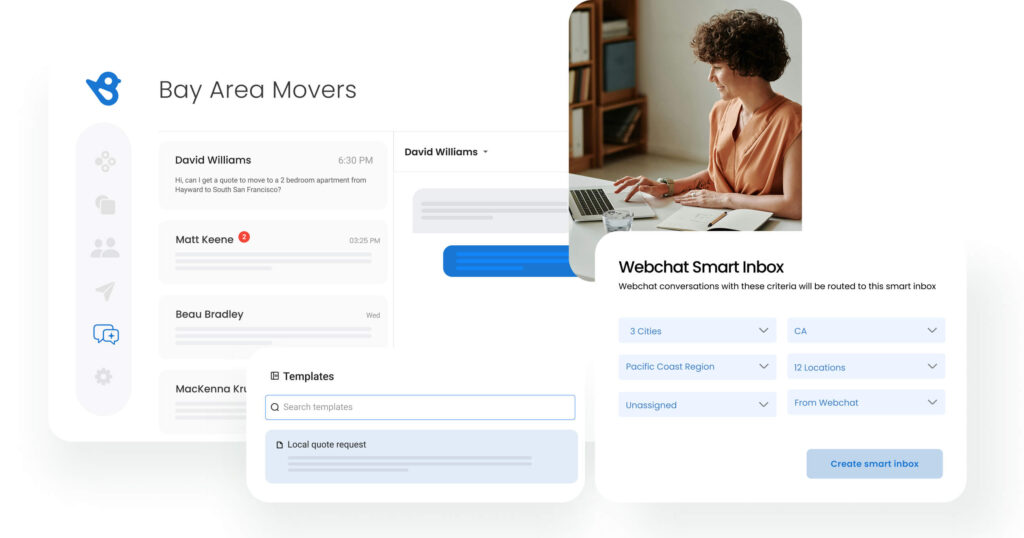
When personalization meets feedback in the flow of conversation, it creates a loop of continuous improvement that enhances both customer experience and business impact. This intersection of personalization and instant insight is exactly what powered D4C Dental’s transformation with Birdeye.
How Birdeye helped D4C Dental create meaningful conversations
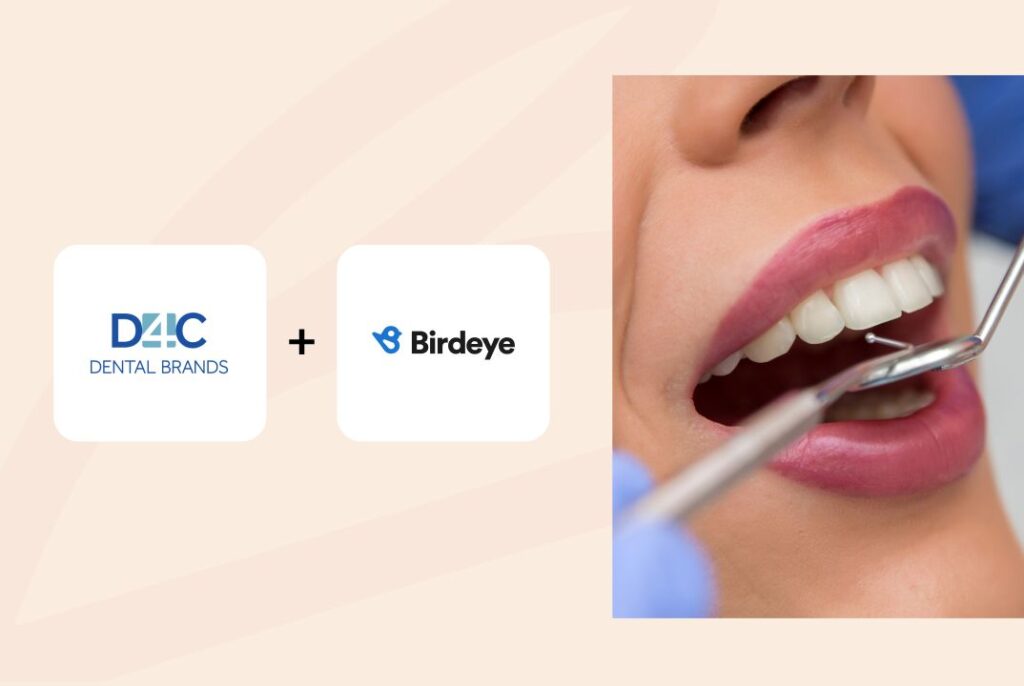
The brand
D4C Dental Brands is a major Dental Support Organization (DSO) with over 200 pediatric and orthodontic practices across the U.S.
The challenge
Managing customer experience at scale was difficult. With so many locations, ensuring consistency, capturing feedback, and benchmarking performance proved challenging.
The solution
D4C implemented Birdeye Insights AI to capture, analyze, and act on patient feedback in real-time. The platform tracked sentiment across locations, surfaced trends like long wait times or poor follow-ups, and helped D4C improve patient satisfaction.
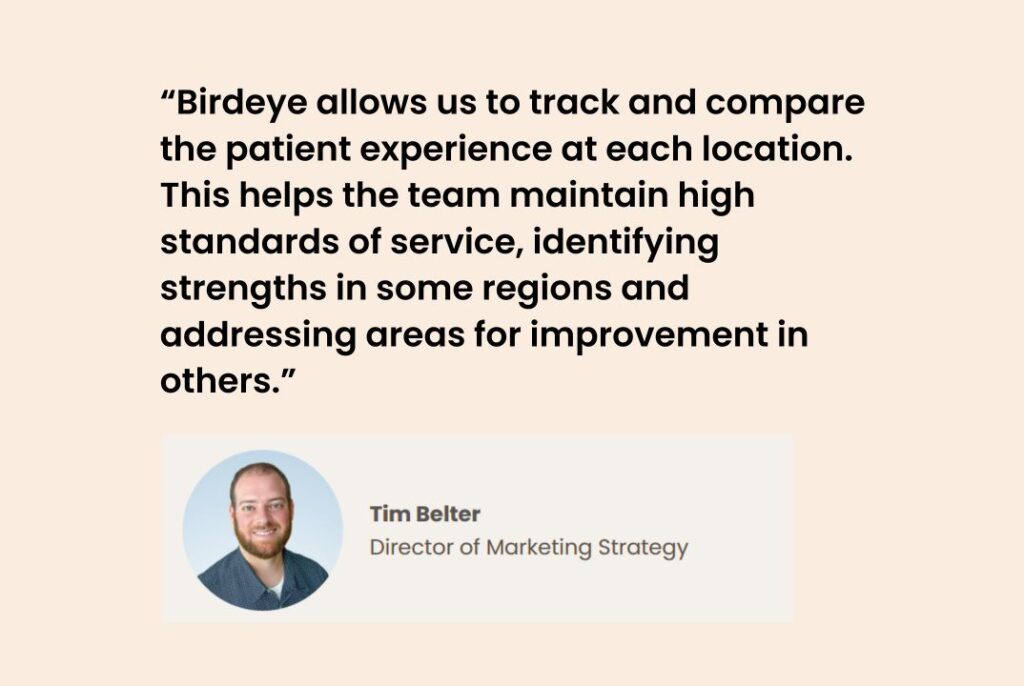
Using tools like Quick Action Buttons and Performance by Location, D4C acted on insights faster, optimized staffing, and improved service quality.
Learn more about Birdeye and D4C Dental case study
Examples of conversational marketing
Understanding how conversational marketing works begins by observing how leading brands are already using it to move customers through the sales funnel, not with hard pushes or generic blasts but with timely, human-like interactions that feel personal in both our professional and personal lives.
Let’s explore six standout real-world conversational marketing examples that prove how impactful this strategy can be across different industries.
1. Dollar Shave Club: Witty, human emails that drive results
Dollar Shave Club transforms the inbox into a conversation. Their emails feel less like brand communications and more like a friend cracking a well-timed joke. This casual yet clever tone prompts clicks and replies, not just passive opens, making their emails an extension of their customer-centric brand voice.
2. MOO: Storytelling that makes customers feel seen
MOO, the online platform for personalized business cards and custom print solutions, customizes communication by featuring real customer stories in their marketing emails. These stories resonate because they speak directly to a reader’s identity, industry, or values, delivering personalized content without sounding salesy.
Pro Tip: Personal storytelling is a powerful tool for gathering insights and creating content that reflects what your customers actually care about.
3. Casper: Real-time quizzes that personalize product discovery
Casper, the online brand for mattresses and sleep products, goes beyond basic chatbot prompts with interactive quizzes that guide customers to the right mattress based on their preferences and habits. This tactic not only simplifies decision-making but also improves data collection on customer needs.
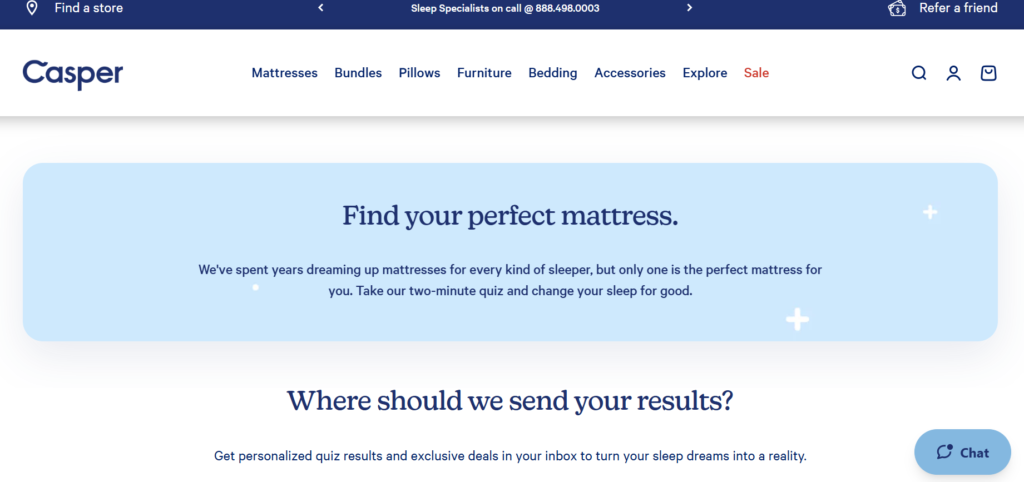
Impact: Casper blends digital marketing with interactive tools, making the buying process more conversational and frictionless.
4. Sephora: AI-powered beauty advice in real time
Sephora’s live chat and virtual advisors offer customers immediate, tailored product recommendations, mimicking the in-store beauty consultant experience. Their system even remembers past queries and purchase history, providing personalized experiences at scale.
Customer win: Real-time support increases buyer confidence and shortens the sales cycle.
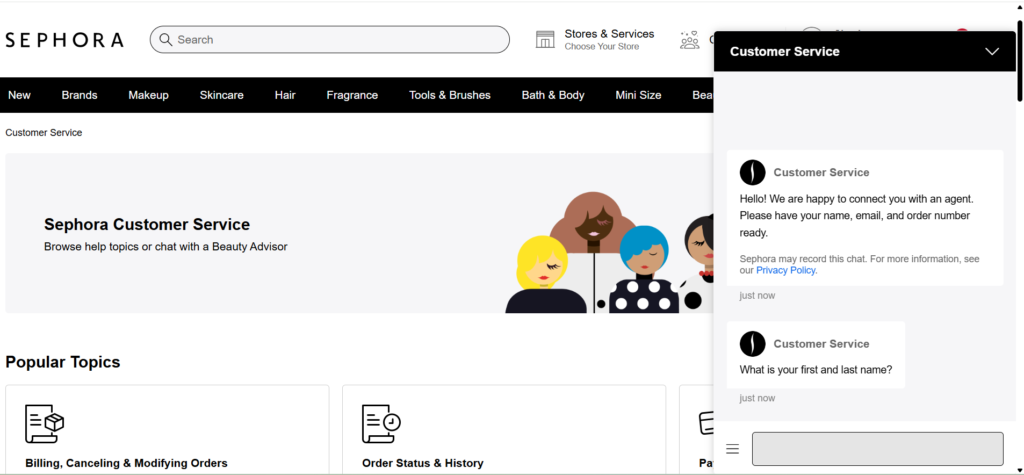
5. Wendy’s: Responsive, witty social engagement
Wendy’s Twitter account became famous not through promotions but through fast, funny replies that sparked conversations with fans. Their tone feels authentic and bold, something few brands manage to balance at scale.
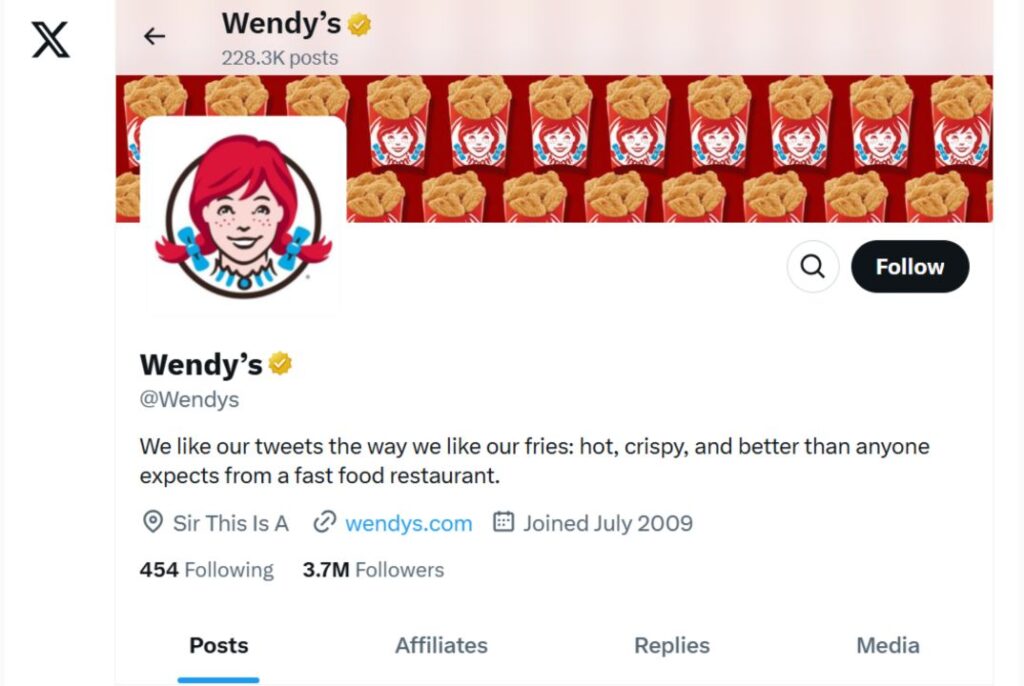
Strategic value: Social isn’t just for broadcasting; it’s the frontline for humanizing your brand and building community through authentic interactions.
6. Nike: Hyper-personalized messaging with purpose
Nike leverages location data, user activity, and purchase history to push out personalized messages via app notifications and SMS. Whether it’s reminding a runner to hydrate after a logged workout or promoting a nearby store event, the message is always relevant.
Result: This level of personalization increases website traffic, retention, and customer loyalty while pushing the user further down the sales funnel.
Steps to build a conversational marketing strategy that works
These examples mentioned prove that conversational marketing is about strategy and execution.
Here’s how to build a smart, scalable approach that turns every interaction into a business opportunity:
Step 1: Know your audience and define clear goals
Start by identifying your target audience and their pain points. Are they looking for faster responses or more personalization? Then, map those needs to specific outcomes like more leads, improved NPS, or shorter sales cycles.
Step 2: Choose the right communication channels
Your customers already have favorite platforms; meet them there. Whether it’s website chat, SMS marketing, Facebook Messenger, or voice assistants, pick channels they trust and use daily.
Step 3: Craft a consistent tone of voice
Define your tone. Is it warm, witty, or direct? Then, apply it consistently across all touchpoints. The goal is to make the brand voice feel natural and recognizable, no matter where the conversation happens.
Pro Tip: Test different tones with small audiences to find what resonates most. A/B testing works in conversation, too.
Step 4: Automate smartly with AI
Use intelligent tools like Birdeye Chatbot AI to scale without sounding robotic. It can:
- Handle FAQs with human-like interactions.
- Escalate complex issues to live agents seamlessly.
- Pull answers from your website and top SEO pages automatically.
- Follow up via text to keep leads engaged.
Step 5: Track what matters
Analyze response times, conversion rates, and customer sentiment. Use platforms like Birdeye’s smart inbox and Insights AI to identify which conversations are moving the needle and which ones need refining.
Let’s look at how Birdeye Insights AI solutions helped the brand D4C Dental to improve its marketing efforts.
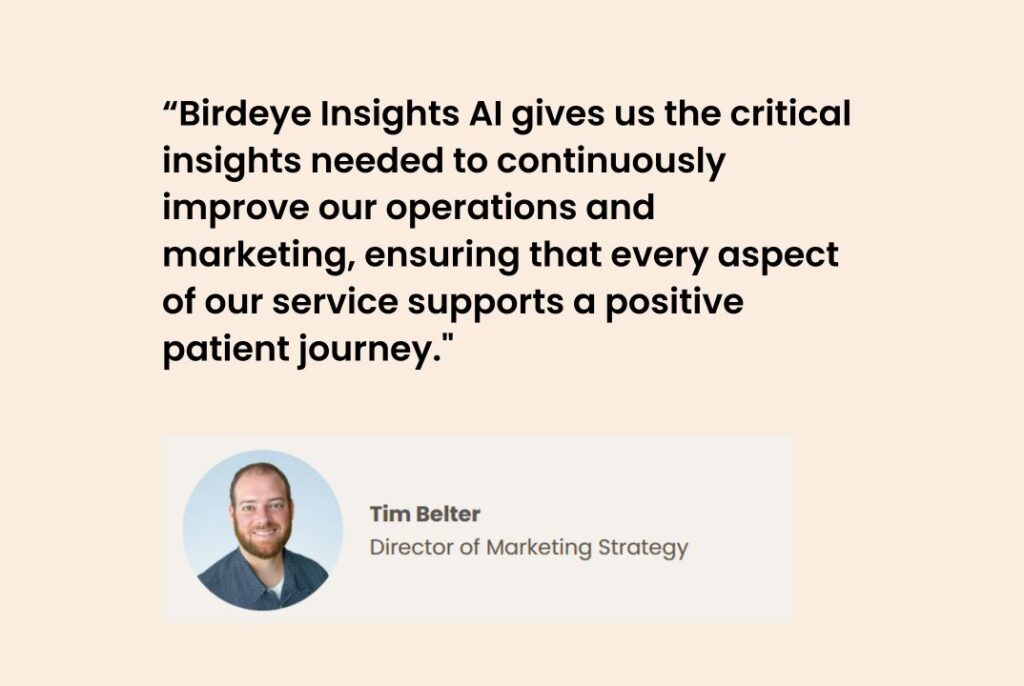
Pro Tip: Track both macro (channel performance) and micro (conversation-level) metrics to improve messaging precision.
Step 6: Keep the conversation going
Your job doesn’t end after the first reply. Follow up with contextual emails, AI-generated newsletters, or two-way SMS that continue the journey. The best conversational strategies are the ones that don’t end when the chat window closes.
When executed well, conversational marketing blends the personalization of field sales with the scale of digital platforms. It’s agile, measurable, and inherently customer-centric, bringing long-term value in both relationship-building and business growth.
Why Birdeye Chatbot AI sets a new standard
Birdeye Chatbot AI delivers the enhanced customer experience modern businesses need:
- Human-like chats trained on your top 20 SEO pages
- Easy transition to live agents
- Auto-learns from your site and FAQs
- Follow-ups via text to keep prospects warm
- Smart inbox for centralized communication
It helps businesses:
- Convert leads faster
- Maintain engagement even post-chat
- Provide 24/7 support
- Personalize at scale without extra workload
Whether you have three or 300 locations, Birdeye grows with you. It’s more than automation; it’s intelligent, intuitive, and ready on day one.
Birdeye leads the way in conversational marketing and support
In the evolving landscape of conversational marketing, Birdeye isn’t just participating; it’s setting the benchmark. Recognized across regions and enterprise tiers, Birdeye’s GenAI solutions are redefining how businesses engage, convert, and retain customers through real-time conversations.
In the Spring 2025 Reports, Birdeye earned top honors across both Conversational Marketing and Conversational Support categories, validating its market leadership, usability, and results-driven performance:
G2 Winter 2025 – Conversational Marketing
- Most Implementable – Enterprise: Birdeye Chatbot AI delivers instant value with zero setup friction.
- Highest User Adoption – Enterprise: Built for usability and scale, Birdeye is adopted faster across teams.
- Easiest Setup- Easiest setup to launch your business with ease.
- Grid Leader – Enterprise: Trusted by large, multi-location brands to drive personalized customer engagement at scale.
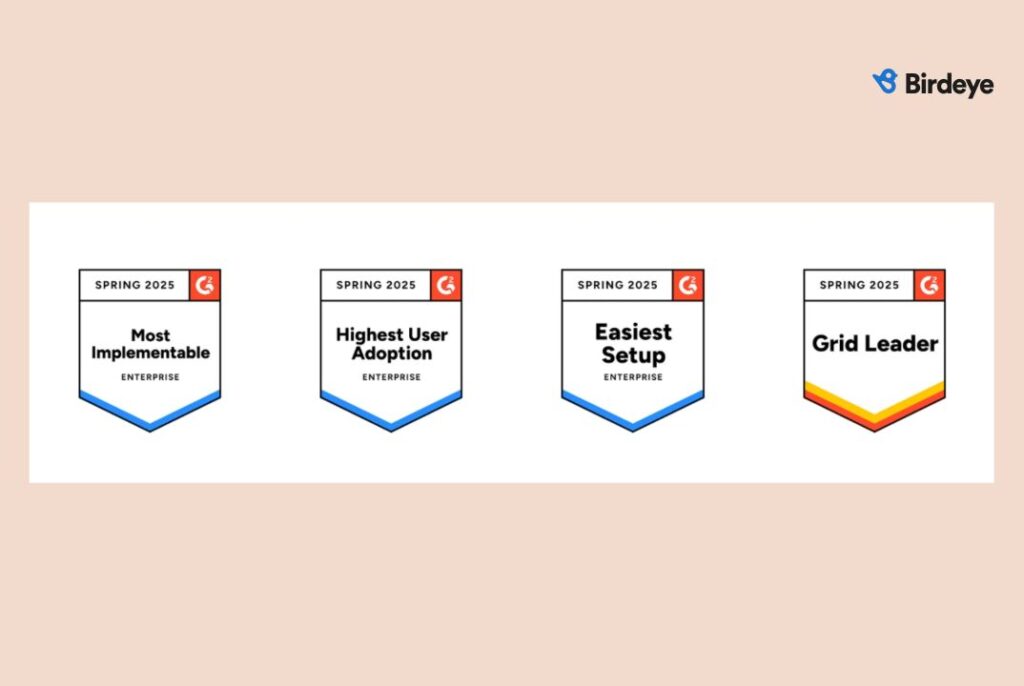
G2 Winter 2025 – Conversational Support
- Leader – Americas: Recognized across North and South America for conversational excellence.
- Fastest Implementation – Enterprise: Set up in hours, not weeks, Birdeye gets to work immediately.
- Best Results – Enterprise: Consistently delivers business outcomes that matter, from more leads to shorter sales cycles.
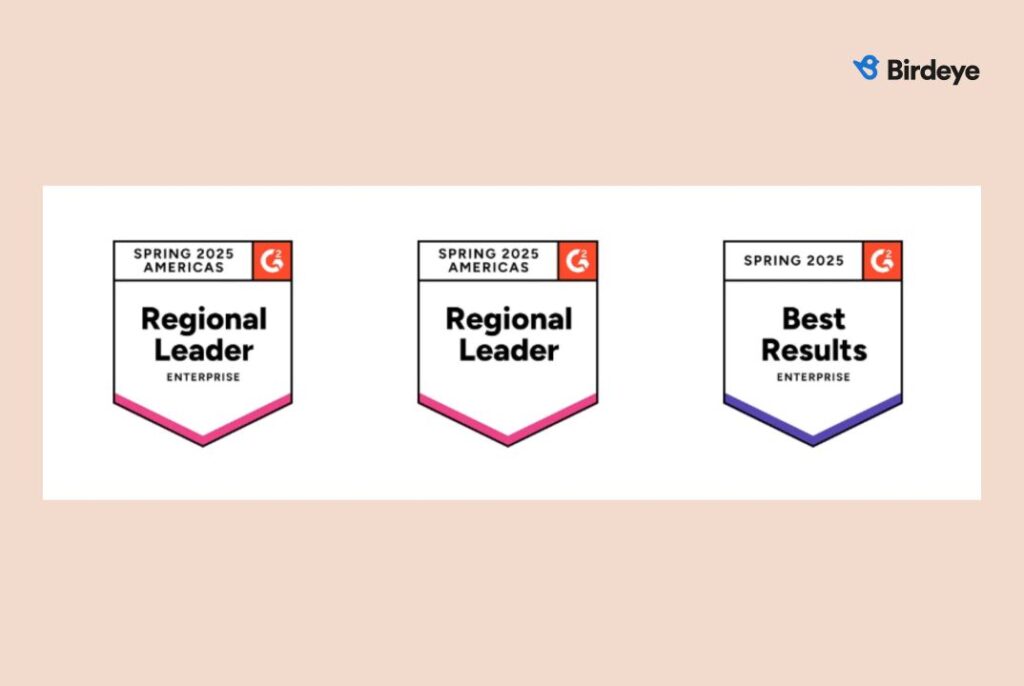
From AI-powered chat to smart inboxes and real-time sentiment tracking, Birdeye’s solutions are designed to make every conversation actionable. Whether it’s marketing and sales, support, or reputation management, Birdeye helps brands move faster, engage deeper, and grow stronger.
FAQs on Conversational marketing
Conversational marketing is a strategy that uses real-time conversations to engage customers, answer questions, and guide them through their buying journey.
It works by initiating two-way chats using tools like live chat, chatbots, and messaging apps, delivering personalized conversations at scale.
Key benefits include improved lead generation, faster responses, better customer relationships, and enhanced customer experience.
Great examples include Sephora’s live chat, Wendy’s social media tone, and Casper’s sleep quizzes.
Start with your target audience, pick the right communication channels, define your voice, use AI tools like Birdeye, and track performance continuously.
Conversational marketing focuses on real-time, two-way interactions with customers, while traditional marketing broadcasts messages to a broad audience without immediate engagement.
Where is conversational marketing heading?
AI will drive the next chapter of inbound marketing and customer engagement. We’re already seeing advanced tools capable of natural language generation, predictive insights, and seamless omnichannel support.
From ChatGPT-style chatbots to smart email marketing assistants, automation is at the proactive stage.
- Expect the future of conversational tools to include:
- Hyper-personalized dialogue across multiple channels.
- Voice search integration for real-time support.
- AI agents that align closely with your conversational marketing strategy to enhance every customer interaction
Ready to stay ahead of the curve? Explore how Birdeye’s AI-powered tools can transform your conversational marketing strategy today.
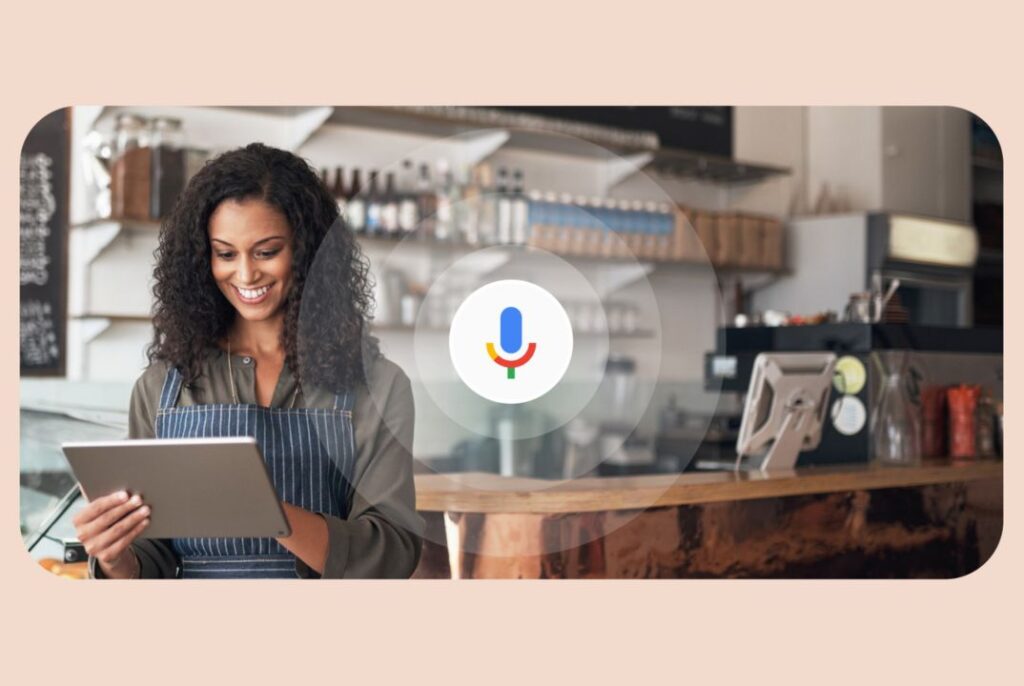
Pro tip: BirdAI agents can learn your brand voice, translate, automate multi-location messaging, and deliver scalable, human-like conversations across marketing, support, and reputation workflows.
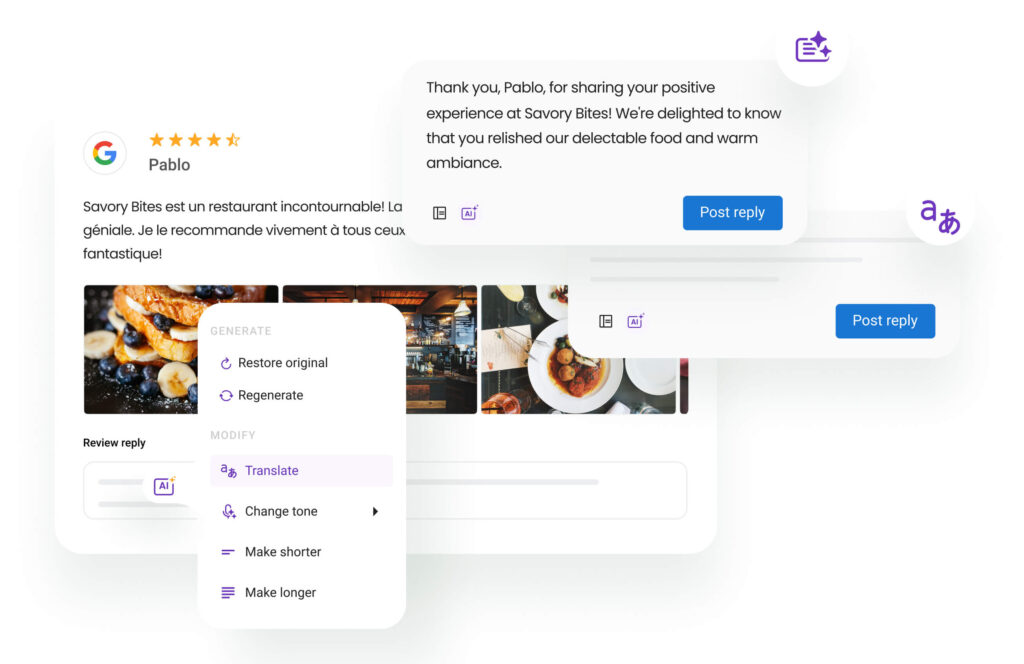
If your business relies on trust, timing, and tailored conversations, a conversational marketing strategy is your go-to solution. With platforms like Birdeye, you can automate, personalize, and scale every conversation of your customer journey to drive real business outcomes.
Ready to meet your next customer in real-time with Birdeye and improve customer engagement? Watch a demo now.

Originally published





